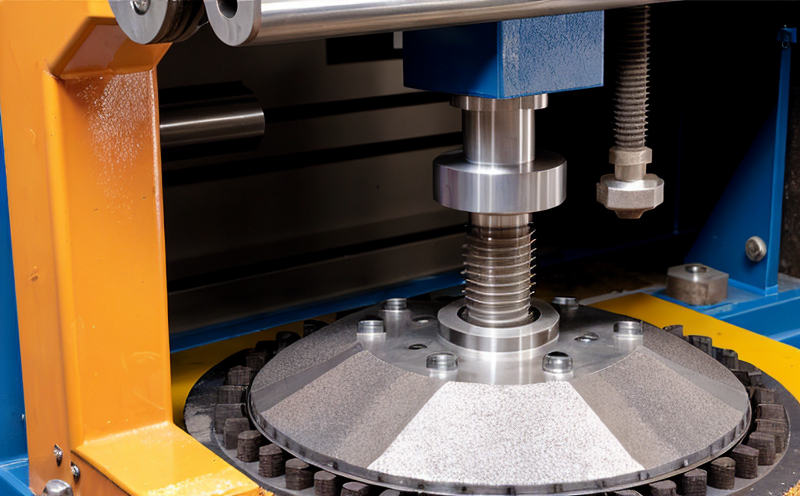ISO 20816-2 Vibration Measurement for Large Machines
The ISO 20816 series of standards provides a comprehensive framework for the testing and evaluation of vibration in rotating machines. Specifically, ISO 20816-2 focuses on the measurement and analysis of vibrations that occur during the operation of large machines such as HVAC equipment, pumps, and turbines. This service is crucial for ensuring mechanical reliability, compliance with international standards, and minimizing operational risks.
Large machinery in industrial environments often operates under demanding conditions, subjecting components to significant stress and strain over extended periods. Vibration analysis helps identify potential issues before they escalate into failures that could disrupt production or cause safety hazards. By adhering to the stringent requirements outlined in ISO 20816-2, manufacturers can ensure their products meet rigorous performance expectations.
The testing procedure involves several key steps: selecting appropriate sensors for accurate vibration detection, placing these sensors strategically around the machine’s critical components, and utilizing advanced signal processing techniques to analyze collected data. Compliance with this standard ensures that all measurements are precise and reliable, providing a robust foundation upon which further analysis can be built.
One of the primary objectives when performing ISO 20816-2 tests is to establish baseline vibration levels for each machine type. These baselines serve as reference points against which future performance can be compared. Over time, any deviations from these established norms may indicate wear or other underlying issues that need addressing promptly.
Another critical aspect of this service is ensuring proper specimen preparation prior to testing. This includes cleaning the surfaces being tested thoroughly and applying any necessary lubricants according to manufacturer guidelines. Additionally, it's essential to calibrate all instruments used in the process correctly before beginning measurements.
| Parameter | Description |
|---|---|
| Vibration Magnitude | The amplitude of vibrations measured over time. |
| Frequency Range | The range within which significant vibration occurs. |
| Harmonic Content | Any periodic components that are integer multiples of the fundamental frequency. |
By closely monitoring these parameters, we can gain valuable insights into how various factors influence machine performance. Understanding this data allows us to make informed decisions regarding maintenance schedules and potential upgrades aimed at extending equipment lifespan while maintaining optimal operational efficiency.
In summary, ISO 20816-2 vibration measurement for large machines plays a vital role in safeguarding industrial operations by providing accurate, reliable information about machine health. Through meticulous testing procedures and adherence to internationally recognized standards, we help ensure that our clients' assets perform optimally throughout their lifecycle.
Why It Matters
Vibration measurement is essential for maintaining the integrity of large machinery used in HVAC systems. The importance of this service cannot be overstated, as it directly impacts several critical aspects of industrial operations:
Preventive Maintenance: Identifying signs of early wear through regular vibration testing enables timely intervention before more severe problems arise.
Risk Management: By detecting potential issues promptly, companies can avoid costly downtime and associated losses.
Compliance: Adherence to industry standards ensures that equipment meets regulatory requirements, enhancing overall safety and performance.
The reliability of HVAC systems is paramount in ensuring efficient energy consumption and optimal comfort levels. Regular vibration testing helps maintain these standards by providing actionable data on machine condition, thereby supporting long-term sustainability goals.
Quality and Reliability Assurance
The process of ISO 20816-2 vibration measurement is designed to ensure high levels of quality and reliability in large machines. This involves several key components:
Selection of Suitable Sensors: Choosing the right sensor types based on specific application requirements guarantees accurate data collection.
Strategic Placement of Sensors: Placing sensors at strategic points allows for comprehensive coverage of all relevant areas, ensuring no critical zones are overlooked.
Advanced Signal Processing Techniques: Applying sophisticated algorithms helps extract meaningful information from raw sensor outputs, enhancing diagnostic capabilities significantly.
Achieving consistent and repeatable results requires careful calibration of equipment. This includes not only the sensors themselves but also any auxiliary devices involved in the testing procedure. Proper calibration ensures that all measurements are accurate and comparable across different tests and environments.
Compliance with ISO 20816-2 standards adds another layer of assurance by providing a standardized approach to vibration measurement. This consistency helps maintain quality throughout the entire lifecycle of an HVAC system, from initial design through installation, operation, maintenance, and eventual disposal.
Use Cases and Application Examples
Vibration Monitoring During Installation: Ensuring proper alignment of components during setup helps prevent misalignment-induced vibrations later on.
Condition-Based Maintenance Planning: By regularly monitoring vibration levels, operators can plan maintenance activities more effectively, reducing unplanned downtime.
Diagnostics for Troubleshooting Issues: Detecting unusual patterns in vibration data allows technicians to pinpoint specific areas requiring attention quickly.
| Use Case | Description |
|---|---|
| Vibration Monitoring During Installation | Ensuring correct alignment during setup prevents future problems caused by misalignment-induced vibrations. |
| Condition-Based Maintenance Planning | Regular monitoring helps in scheduling maintenance activities more effectively, minimizing unexpected outages. |
| Diagnostics for Troubleshooting Issues | Unusual patterns can be used to identify specific parts needing attention sooner rather than later. |
A practical example would involve an HVAC system installed in a commercial building. During initial setup, vibration sensors are placed strategically around key components like compressors and fans. Over time, the collected data is analyzed using advanced signal processing techniques to detect any deviations from expected patterns. Any discrepancies could then be investigated further to determine their root cause.





